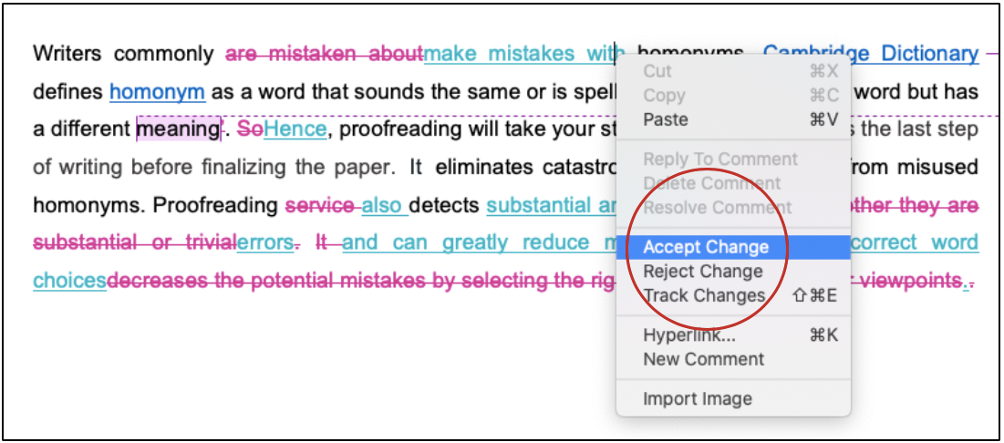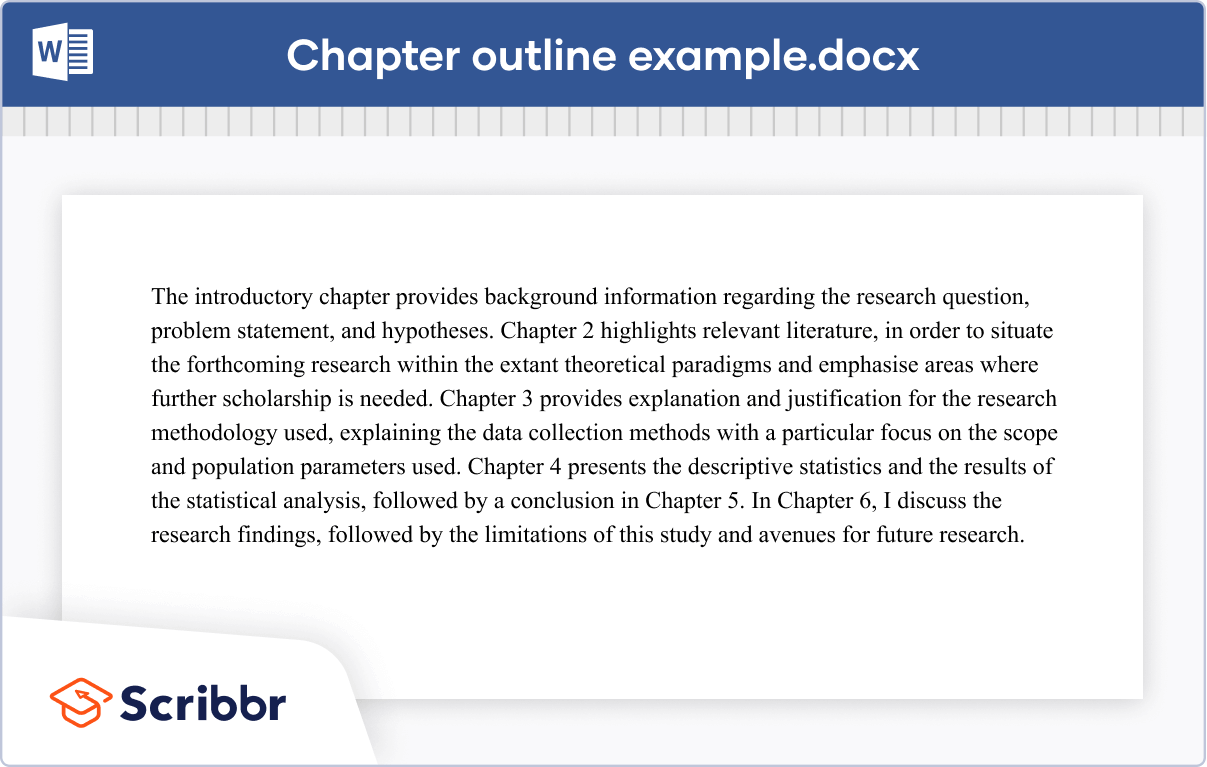

Research Paper: A step-by-step guide: 3. Thesis Statement & Outline
- 1. Getting Started
- 2. Topic Ideas
- 3. Thesis Statement & Outline
- 4. Appropriate Sources
- 5. Search Techniques
- 6. Taking Notes & Documenting Sources
- 7. Evaluating Sources
- 8. Citations & Plagiarism
- 9. Writing Your Research Paper

About Thesis Statements
Qualities of a thesis statement.
Thesis statements:
- state the subject matter and main ideas of a paper.
- appear in the first paragraph and announces what you will discuss in your paper.
- define the scope and focus of your essay, and tells your reader what to expect.
- are not a simple factual statement. It is an assertion that states your claims and that you can prove with evidence.
- should be the product of research and your own critical thinking.
- can be very helpful in constructing an outline for your essay; for each point you make, ask yourself whether it is relevant to the thesis.
Steps you can use to create a thesis statement
1. Start out with the main topic and focus of your essay.
youth gangs + prevention and intervention programs
2. Make a claim or argument in one sentence. It can be helpful to start with a question which you then turn into an argument
Can prevention and intervention programs stop youth gang activities? How? ►►► "Prevention and intervention programs can stop youth gang activities by giving teens something else to do."
3. Revise the sentence by using specific terms.
"Early prevention programs in schools are the most effective way to prevent youth gang involvement by giving teens good activities that offer a path to success."
4. Further revise the sentence to cover the scope of your essay and make a strong statement.
"Among various prevention and intervention efforts that have been made to deal with the rapid growth of youth gangs, early school-based prevention programs are the most effective way to prevent youth gang involvement, which they do by giving teens meaningful activities that offer pathways to achievement and success."
5. Keep your thesis statement flexible and revise it as needed. In the process of researching and writing, you may find new information or refine your understanding of the topic.
You can view this short video for more tips on how to write a clear thesis statement.
An outline is the skeleton of your essay, in which you list the arguments and subtopics in a logical order. A good outline is an important element in writing a good paper. An outline helps to target your research areas, keep you within the scope without going off-track, and it can also help to keep your argument in good order when writing the essay. Once your outline is in good shape, it is much easier to write your paper; you've already done most of the thinking, so you just need to fill in the outline with a paragraph for each point.
To write an outline: The most common way to write an outline is the list format. List all the major topics and subtopics with the key points that support them. Put similar topics and points together and arrange them in a logical order. Include an introduction, a body, and a conclusion.
A list outline should arrange the main points or arguments in a hierarchical structure indicated by Roman numerals for main ideas (I, II, III...), capital letters for subtopics (A, B, C...), Arabic numerals for details (1,2,3...), and lower-case letters for fine details if needed (a,b,c...). This helps keep things organized.
Here is a shortened example of an outline:
Introduction: background and thesis statement
I. First topic
1. Supporting evidence 2. Supporting evidence
II. Second Topic
III. Third Topic
I. Summarize the main points of your paper II. Restate your thesis in different words III. Make a strong final statement
You can see examples of a few different kinds of outlines and get more help at the Purdue OWL .
- << Previous: 2. Topic Ideas
- Next: 4. Appropriate Sources >>
- Last Updated: Apr 18, 2023 12:12 PM
- URL: https://butte.libguides.com/ResearchPaper
- Privacy Policy

Home » Thesis Format – Templates and Samples
Thesis Format – Templates and Samples
- Table of Contents
A thesis format provides a structured framework for presenting research in an organized and academically acceptable manner. It ensures consistency in layout, style, and structure, enabling readers to navigate and understand the document effectively. Whether you are working on an undergraduate thesis, master’s dissertation, or doctoral dissertation, adhering to the correct thesis format is crucial for academic success.
This article explains the essential components of a thesis, provides examples of templates, and includes tips for creating a polished and well-structured document.

Thesis Format
A thesis format refers to the standardized layout and presentation style required for a thesis. It governs elements like font, margins, chapter organization, and referencing style, ensuring that the thesis meets institutional or academic publication standards.
Key Features of a Thesis Format:
- Consistency: Creates a uniform presentation throughout the document.
- Readability: Provides clarity and ease of navigation for readers.
- Compliance: Aligns with institutional guidelines and academic standards.
For example, a university might require 1-inch margins, Times New Roman font size 12, double-spacing, and APA referencing style for all submitted theses.
Components of a Thesis Format
1. title page.
The title page includes the thesis title, author’s name, institution, department, supervisor’s name, and submission date. Some institutions may also require the inclusion of their logo.
Example Title Page:
Title: Exploring the Role of Artificial Intelligence in Education Author: Jane Doe Institution: University of Excellence Program: Master of Science in Computer Science Submission Date: August 2024
2. Abstract
The abstract is a concise summary (150–300 words) that highlights the research objectives, methodology, key findings, and implications. It serves as a snapshot of the entire thesis for readers.
3. Acknowledgments
This optional section allows the author to express gratitude to individuals or organizations that supported their research.
4. Table of Contents
The table of contents lists all chapters, sections, and subsections along with their corresponding page numbers. This section ensures easy navigation for readers.
Example Table of Contents:
- Introduction ……………………………………….. 1
- Literature Review …………………………….. 10
- Methodology ……………………………………. 25
- Results ……………………………………………. 40
- Discussion ……………………………………….. 55
- Conclusion ……………………………………… 70 References ………………………………………………. 80 Appendices ………………………………………………. 90
5. List of Figures and Tables
This section lists all figures and tables in the document, along with their titles and page numbers.
6. Main Body
The main body is the core of the thesis and includes the following sections:
a. Introduction
- Provides background information and context for the research.
- States the research problem, objectives, and questions.
- Outlines the structure of the thesis.
b. Literature Review
- Summarizes and critically evaluates existing research related to the topic.
- Identifies gaps in knowledge and justifies the research.
c. Methodology
- Describes the research design, data collection methods, and analytical techniques used.
- Includes ethical considerations and limitations of the study.
d. Results/Findings
- Presents data in an organized manner using tables, charts, and graphs.
- Focuses on key patterns, trends, and insights.
e. Discussion
- Interprets the findings in relation to the research objectives and existing literature.
- Highlights implications, limitations, and suggestions for future research.
f. Conclusion
- Summarizes the key findings and their significance.
- Reiterates how the research contributes to the field.
7. References/Bibliography
Lists all sources cited in the thesis in the required referencing style (e.g., APA, MLA, Chicago). This section ensures proper attribution and academic integrity.
8. Appendices
Includes supplementary materials such as raw data, questionnaires, interview transcripts, or additional figures.
Thesis Outline
- Thesis Title
- Author’s Name
- Institution Name
- Department/Faculty
- Supervisor’s Name
- Submission Date
A brief summary (150–300 words) covering the research problem, objectives, methods, key findings, and significance.
3. Acknowledgments (Optional)
Expressions of gratitude to individuals or organizations that supported your research.
Lists all sections, chapters, and sub-sections with their corresponding page numbers.
5. List of Figures and Tables (If applicable)
Includes titles and page numbers for all figures and tables used in the thesis.
Chapter 1: Introduction
1.1 Background of the Study 1.2 Research Problem 1.3 Research Objectives 1.4 Research Questions 1.5 Scope of the Study 1.6 Significance of the Study 1.7 Organization of the Thesis
Chapter 2: Literature Review
2.1 Theoretical Framework 2.2 Review of Related Studies 2.3 Identification of Research Gaps
Chapter 3: Methodology
3.1 Research Design 3.2 Sampling Techniques 3.3 Data Collection Methods 3.4 Analytical Tools and Techniques 3.5 Ethical Considerations
Chapter 4: Results/Findings
4.1 Presentation of Data (Tables, Graphs, Charts) 4.2 Analysis and Interpretation of Results
Chapter 5: Discussion
5.1 Summary of Findings 5.2 Comparison with Existing Literature 5.3 Implications of the Findings 5.4 Limitations of the Study
Chapter 6: Conclusion and Recommendations
6.1 Summary of Key Points 6.2 Recommendations for Practice or Policy 6.3 Suggestions for Future Research
7. References
A comprehensive list of all sources cited in the thesis, formatted according to the required referencing style (e.g., APA, MLA, Chicago).
8. Appendices (If applicable)
Includes supplementary materials such as raw data, survey questionnaires, interview transcripts, or additional figures.
Thesis Format Templates
Template 1: standard thesis format.
- Acknowledgments
- List of Figures and Tables
- Introduction
- Literature Review
- Methodology
- Results/Findings
Template 2: APA Style Thesis Format
- Title Page formatted according to APA style.
- Abstract limited to 250 words.
- References following APA citation guidelines.
- Appendices for additional materials.
Tips for Formatting a Thesis
- Follow Institutional Guidelines: Always refer to the specific requirements provided by your institution or department.
- Use Consistent Styles: Ensure uniformity in headings, fonts, and spacing throughout the document.
- Leverage Technology: Use word processing tools like Microsoft Word or LaTeX to create templates and manage references.
- Proofread Carefully: Check for grammatical errors, formatting inconsistencies, and missing references.
- Consult Examples: Review well-structured theses from your institution for guidance.
A well-organized thesis format is essential for presenting research professionally and effectively. By adhering to a structured format and incorporating all necessary components—such as the title page, abstract, methodology, and references—students can ensure their thesis meets academic standards. Using templates and examples as guides, along with careful attention to detail, simplifies the process and ensures a polished final document.
- Creswell, J. W. (2018). Research Design: Qualitative, Quantitative, and Mixed Methods Approaches . Sage Publications.
- Swales, J. M., & Feak, C. B. (2012). Academic Writing for Graduate Students: Essential Tasks and Skills . University of Michigan Press.
- Turabian, K. L. (2018). A Manual for Writers of Research Papers, Theses, and Dissertations . University of Chicago Press.
- American Psychological Association. (2020). Publication Manual of the American Psychological Association (7th ed.).
- The University of Cambridge. (2023). Thesis Formatting Guidelines . [Online resource from institutional repository].
About the author
Muhammad Hassan
Researcher, Academic Writer, Web developer
You may also like

Research Design – Types, Methods and Examples

Limitations in Research – Types, Examples and...

What is a Hypothesis – Types, Examples and...

Thesis Statement – Examples, Writing Guide

Appendices – Writing Guide, Types and Examples

Informed Consent in Research – Types, Templates...
18 Thesis Outline Templates and Examples (Word | PDF)
Most people have come across thesis in college or high school. However, you might be needed to write a thesis several times or once in your entire lifetime. Therefore, a thesis is an essential document that significantly impacts your high school or college success. Furthermore, it can promote you to your next academic level or acquire a referral.
Therefore, you need to exercise sufficient care and diligence when writing your thesis. To ensure that you are always at the top of the game when developing a thesis, you must incorporate a thesis outline template to help you focus on your thesis. Suppose you are not familiar with the thesis outline template, worry less because this article has you covered.
What is a Thesis Outline?
A thesis outline is a list of critical points of your essay. It is made to make sure that the plans for your thesis are gathered together so that the entire variables necessary to your study scope are considered correctly. In addition, a thesis outline is an excellent way of creating a perfect research paper because it enables you to organize your data appropriately.
What Is a Thesis Outline Template?
A thesis outline template is a fillable or editable document that guides the researchers through the entire process, which they require to complete the whole research planning, gathering of data, assessment of results, and finally implementation.
Thesis Outline Examples & Templates

How to Write a Thesis Outline?
Below are a few steps that will guide you on writing a thesis outline:
- Put your thesis statement at the start
- State the primary points that support your thesis and label them using Roman numerals
- List arguments and ideas that support every central point and label them using capital letters
- If possible, continue sub-dividing every supporting idea until you confirm that your entire outline is fully created and label them in numbers or small letters.
Types of Thesis Outline
There are four types of thesis outline. They include:
- Clustering- It is a random outline form
- Index card outlining- This outline allows continuous reorganization of ideas
- A summary outlining- Here, the researcher estimates the sum chapters in their manuscript
- Classical outlining- It entails numbers, letters, and roman numerical for subheadings and headings
Sample Thesis Outline

Thesis Outline Template

Thesis Outline Template (PDF)
An thesis essay outline template is a template containing how an essay ought to be drafted, stored in a PDF version. As expected, such templates are stored in such a portal so as to enable ease of sharing among the interested parties [could be students, researchers, tutors etc].

Thesis Outline Template (Word)

Masters Thesis Proposal Outline Template
A master’s thesis outline is a document that contains a guideline on how to write a thesis for those students undertaking a master’s degree program. The document resembles any thesis outline in its general outlook, only that the expected level of research is a bit more technical. The basic components of this outline include an Introduction, Review, Research Questions, Methodology and a Conclusion.

Senior Thesis Outline

Thesis Statement & Outline Template
Thesis statement outline examples are examples that project the rough idea of what a researcher’s viewpoints are. Such examples usually contain the declarations officially made by the researcher just before they conduct their research. The examples show what the researcher is confident about fulfilling out of the research.

Thesis Proposal Outline Template

Honors Thesis Outline Template

Thesis Essay Outline Template

Academic Thesis Outline Template

Thesis Paper Outline (Word)
A thesis paper outline example is a draft that details all the key points that would normally go in a thesis paper. Such an example has an introduction, the content body and a conclusion in rough draft. These would later be used by the writer in composing the actual thesis paper.


What is a good thesis outline?
A good thesis outline is a specific strong thesis statement that showcases what your research is all about. Furthermore, it helps you keep your paper to a topic you can easily handle without any problem.
What are the different parts of a thesis?
Here are different parts of a thesis:
Introduction and problem statement
The introduction of your thesis usually sets out the context and locates a particular problem that you as the researcher address. In addition, it includes relevant technical, geographical, and historical information, which is relevant to your specific problem and wide field. On the other hand, it clearly articulates the issue you seek to address. Therefore, ensure you state your primary problem in your introduction.
Literature review
This section of your thesis shows you have accomplished relevant research, reading, and coming up with sensible external research. Literature review needs you to include some tips, such as putting together related research and organizing your scholarship in chronological order.
Methodology section
The methodology section gives you a chance to talk about the kind of field you work in. It would help if you mentioned how researchers in your field accomplish their work. It can either be historical, theoretical, close reading, or data-intensive.
The analysis depends on the needed length of your thesis and field. It makes an essential part of your research. On the other hand, your analysis has to make sense, whether scientific evaluation findings or theoretical analysis. A doctoral-level project, this portion features multiple chapters. Additionally, this section gives you a chance to showcase why your research is crucial.
Here you need to summarize the essential elements of your entire findings as you demonstrate how your entire research can be advanced further.
How do you write a strong thesis statement?
Below are several steps you need to follow to write a strong thesis statement:
- State the topic
- State your primary idea concerning the topic
- Offer a reason, which supports your major idea
- Provide another reason which supports your primary idea and add more reasons
- Involve an opposing viewpoint to your primary idea, where applicable
How many chapters should a thesis have?
A thesis should feature 4 to 6 chapters in a commonly used structure.
Final Thoughts
You now clearly understand the thesis outline based on the comprehensive post above. The outline usually helps you to organize your information in a logical order and hierarchical manner. For example, suppose you are working on research papers; a formal outline will assist you in recording sufficient information. Use this post for guidance, and you will come up with a perfect thesis outline.
How did our templates helped you today?
Opps what went wrong, related posts.

24 FREE Story Outline Templates and Examples (Novel, Book, Plot)

Basic Speech Outline

Biography Outline Templates & Examples

Outline Template for Essay – Word, PDF

Literature Review Outline Templates (in Word & PDF)

12+ Body Outline Templates

Research Paper Outline Template

Novel Outline Template
Thank you for your feedback.
[email protected]
- English English Spanish German French Turkish

How to Structure a Thesis: A Complete Guide
Writing a thesis can be an overwhelming task for many college and graduate students. Managing all the elements associated with a thesis while ensuring that the quality is not compromised can be challenging. However, what is even more strenuous is deciding on a thesis's layout. "How to structure a thesis" is a question that several final-year students struggle to answer. And understandably so, as all colleges and universities have their guidelines for drafting a thesis. However, there is an immutable structure that's common for every thesis. In this brief guide, we will take a look at this structure and analyze each of its components.
This guide discusses how to structure a thesis effectively. To give you an opportunity to practice proofreading, we have left a few spelling, punctuation, or grammatical errors in the text. See if you can spot them! If you spot the errors correctly, you will be entitled to a 10% discount.
A thesis or dissertation is a long academic document that a master's or doctoral candidate writes to obtain a relevant academic degree. Hence, writing a quality thesis is crucial for college and university students. A good thesis demonstrates a student's academic prowess in their field of study as well as helps hone their analytical and research skills. Writing a thesis can be an overwhelming task for many college and graduate students. Managing all the elements associated with a thesis while ensuring that the quality is not compromised can be challenging. However, what is even more strenuous is deciding on a thesis's layout.
"How to structure a thesis" is a question that several final-year students struggle to answer. And understandably so, as all colleges and universities have their guidelines for drafting a thesis. However, there is an immutable structure that's common for every thesis. In this brief guide, we will take a look at this structure and analyze each of its components. If you are also struggling to initiate the writing process for your thesis, follow this guide and get over your writer’s block.
How to Structure a Thesis: Examining the Constituents of a Thesis Structure
Here we have a list of all major sections that a thesis structure generally comprises. The entire thesis structure is segregated into 3 sections, with each section comprising its relevant subsections to facilitate greater legibility.
Front/Preliminary Matter of a Thesis Structure
1. abstract.
An abstract is a concise summary of an entire thesis and consists of the condensation of your entire thesis. A good abstract is precise, concise (usually not more than 250 words) and emphasizes the importance of the document. When writing an abstract, make sure you explicitly mention the crux of your thesis. Also, avoid reiterating what you have mentioned in the title of your document.
Body of a Thesis Structure
2. introduction/preface.
The introduction chapter of your thesis outlines its core arguments, hypotheses, and results. It is longer than the abstract and contains adequate background information on your topic of interest. Furthermore, it establishes the relevance of your thesis by highlighting its contribution to the knowledge base of its topic. Writing a gripping introduction helps the readers understand the context of your thesis. According to USNSW Sydney, the introduction of a thesis should have the following stages:
State the general topic and give some background
Provide a review of the literature related to the thesis subject
Define the terms and scope of the thesis topic
Outline the existing situation
Evaluate the current situation and identify the gap in the literature
Identify the importance of the proposed research
State the main research questions
State the purpose of the study and/or research objectives
State the study hypotheses
Outline the order of information in the thesis
Outline the methodology.
3. Literature review
The literature review chapter sets the premise of your thesis. It examines and evaluates the research works that’s been conducted so far on your thesis topic and passively highlights the contributions of your thesis.
A literature review is a survey of academic sources on a specific subject, providing an overview of current knowledge, allowing you to discuss relevant theories, methods, and gaps in the existing research. Writing a literature review contains finding relevant publications, critically analyzing the sources, and explaining your findings in the literature. A well-written literature review doesn’t only summarize sources, it also aims to analyze, synthesize, and critically evaluate to give a clear picture of the state of knowledge on the topic.
To write an impeccable literature review, consult a plethora of sources and mention the canon related to your thesis topic. Also, put forward your review in a logical, chronological, and structured manner to better outline the knowledge gaps in your field of study and how your thesis will fill them.

The following simple and straightforward tips can act as the exhaustive rubric and offer meaningful insight to prospective authors on how to formulate a flawless literature review:
Step 1. Probe similar works for a well-structured literature review
Step 2. Analyze, not just synthesize: Authors should provide a detailed critique of the subject
Step 3. Organize your literature review systematically
Step 4. Establish the purview: Authors should specify the scope of the literature review
Step 5. Abstain from plagiarism
Step 6 . Be mindful of the language
4. Methodology
As the name suggests, the methodology section of a thesis consists of all methods and procedures you have used in your thesis. A well-written methodology accentuates the plausibility of your research methods. In addition, it enables your readers to understand why you chose specific methods and how they are justified for your research.
To garner more credibility, you can include the pitfalls and difficulties associated with your choice of research methods. The methodology section is an unavoidable part of a thesis or a research paper. Considering errors in the methodology section enervates the entire thesis.
Follow the steps below to write a perfect methodology for a thesis:
a. Give an outline of the research design
b. Don’t forget to define the philosophy behind the research
c. Mention the research approach
d. Introduce the research methods
e. Note the following points to highlight in the methodology. No matter what methodology you have chosen, you have to focus on the following points:
Explain sampling strategy.
Clearly state the procedure of the research paper.
Mention how you collect the data. (Data collection)
Explain how data are analyzed for your research. (Data analysis). Suppose you have written in qualitative strategy like thematic analysis, mention the researcher you have followed.
Mention the validity of the data and result.
Discuss all ethical aspects of your research paper.
f. Avail professional proofreading and editing services
g. Most important tips to compose an impactful methodology for a dissertation
Don’t drift from your objective and the purpose of your dissertation.
Explore scholarly research papers and their methodology sections to have a better idea.
Plan a proper writing structure.
Understand your audience and target group.
Don’t make mistakes in citing relevant sources. You may use APA and MLA citation
Refer to all the hurdles you have experienced while writing your dissertation.
Make sure to rectify grammatical and punctuation errors.
Ensure that the section is readable and doesn’t consist of long and complex sentences. Long sentences can hamper the tone of the methodology.
This section comprises the outcomes of your research work. It includes all the observations you made and the answers to all your hypotheses in the thesis. When writing the “results” chapter, include only factual data and format it to be distinguishable. Use tables, graphs, subheadings, and generic comments for the results. The aim is to enable your readers to discern the result of your research.
6. Discussion
The discussion chapter of your thesis should begin with a brief summarization of the outcome of your research work. It should explain how your results address your hypotheses and highlight any repetitions in your observations. You can also add comments on how you want the readers to interpret your results and about your agreements and disagreements with the available research work in your field.
Writing a flawless thesis requires much more than only subject matter expertise. It requires expertise, experience, and in-depth thinking, along with sharp intelligence. Though most students add a discussion chapter in their thesis or dissertation, many of them end up messing up the essay or missing out on the central issues.
A discussion chapter in a thesis is a place where you have the chance to delving into the analysis, importance, and relevance of your research. This section focuses on explaining and analyzing what you have researched, presenting how it is associated with the existing literature. It is also a place for argument supporting your entire discussion.
We often find that people seek thesis writing help from experienced editing and proofreading services to prepare a flawless discussion chapter. However, the following helpful tips can help you design a perfect master's or Ph.D.. thesis with an excellent discussion chapter:
Understand the objective of your thesis
Determine a clear structure
Usage of grammar and tense
Refer to hypotheses and literature review
Evaluate your results and compare them with existing studies
Understand the limitation of your research
Don’t be afraid to be unique
Don’t forget to avail a professional thesis editing and proofreading service
Click here to review the details of the aforementioned tips.
The following 5 questions might be helpful to write a sound discussion section:
How well do you understand the objective of your study?
What message is conveyed by your results?
How do your findings compare to findings in literature?
Why should your findings matter?
In what light should your findings be viewed?
7. Conclusion
The final section of your document consists of a precise answer to your hypothesis. In addition, the “conclusion” chapter of your thesis should stress the achievement of the aims of your thesis. You should also include certain limitations of your research to convey the fact that there is still scope for further research in your field.
The end matter of a thesis structure
The components of this section include an acknowledgment, a bibliography, and (occasionally) an appendix.
Parting words
The first step to writing a thesis is to chalk out its layout. Doing so not only helps you deal with the writing process one step at a time but also enables you to better attend to each component of a thesis structure.
Also, before you follow this thesis structure, make sure to check with your university for “how to structure a thesis” guidelines. If the guidelines offered by your institution deviate slightly from what’s mentioned in this guide, then make sure to prioritize the former.
If you need us to make your thesis shine, contact us unhesitatingly!
Best Edit & Proof expert editors and proofreaders focus on offering papers with proper tone, content, and style of academic writing, and also provide an upscale editing and proofreading service for you. If you consider our pieces of advice, you will witness a notable increase in the chance for your research manuscript to be accepted by the publishers. We work together as an academic writing style guide by bestowing subject-area editing and proofreading around several categorized writing styles. With the group of our expert editors, you will always find us all set to help you identify the tone and style that your manuscript needs to get a nod from the publishers.

English formatting service for theses and dissertations
You can also avail of our assistance if you are looking for editors who can format your manuscript, or just check on the particular styles for the formatting task as per the guidelines provided to you, e.g., APA, MLA, or Chicago/Turabian styles. Best Edit & Proof editors and proofreaders provide all sorts of academic writing help, including editing and proofreading services, using our user-friendly website, and a streamlined ordering process.
Get a free quote for editing and proofreading now!
Visit our order page if you want our subject-area editors or language experts to work on your manuscript to improve its tone and style and give it a perfect academic tone and style through proper editing and proofreading. The process of submitting a paper is very easy and quick. Click here to find out how it works.
Our pricing is based on the type of service you avail of here, be it editing or proofreading. We charge on the basis of the word count of your manuscript that you submit for editing and proofreading and the turnaround time it takes to get it done. If you want to get an instant price quote for your project, copy and paste your document or enter your word count into our pricing calculator.

24/7 customer support | Live support
Contact us to get support with academic editing and proofreading. We have a 24/7 active live chat mode to offer you direct support along with qualified editors to refine and furbish your manuscript.

Stay tuned for updated information about editing and proofreading services!
Follow us on Twitter, LinkedIn, Facebook, Instagram, and Medium .
For more posts, click here.
- Editing & Proofreading
- Citation Styles
- Grammar Rules
- Academic Writing
- Proofreading
- Microsoft Tools
- Academic Publishing
- Dissertation & Thesis
- Researching
- Job & Research Application
Similar Posts
How to Determine Variability in a Dataset
How to Determine Central Tendency
How to Specify Study Variables in Research Papers?
Population vs Sample | Sampling Methods for a Dissertation
7 Issues to Avoid That may Dent the Quality of Thesis Writing
How to Ensure the Quality of Academic Writing in a Thesis and Dissertation?
How to Define Population and Sample in a Dissertation?
Recent Posts
ANOVA vs MANOVA: Which Method to Use in Dissertations?
They Also Read

Although the rules of English capitalization seem simple at first glance, it might still be complicated in academic writing. You probably know you should capitalize proper nouns and the first word of every sentence. However, in some cases, capitalization is required for the first word in a quotation and the first word after a colon. In this article, you will find 15 basic capitalization rules for English grammer.

As a student or anyone in the academic field, you need to know about your text even before you start writing it. In academic writing, there are so many rules, regulations, styles, and guides that you need to follow. Naturally, to write a good piece of work, you need to make sure that you know about what you are writing. Similarly, it is important to know about the different types of academic writing before you get started on it. This guide discusses the various types of scholarly writing.

Academic writing should be free of all errors and grammatical mistakes to ensure accuracy and professionalism. However, now and then, you come across an error while correcting your work that makes it all extremely difficult — dangling modifiers. What exactly are these, and how can you fix dangling modifiers so that your piece of academic work is perfect in all sense? Don’t worry, as we have the perfect guide to help you through it. In this article, we will cover how you can masterfully eliminate them.

Thesis Outline: Step-by-step Guide To Write Thesis Outline
Writing a thesis can be daunting, but starting a well-organised outline and a strong thesis statement is the first step to success.
This guide offers a step-by-step approach to developing a clear and effective thesis statement and structuring your research in a logical manner.
Whether you’re writing a master’s thesis or a doctoral dissertation, these foundational steps will help you articulate your ideas and lay the groundwork for a compelling piece of academic writing.
Step-by-Step Guide To Write A Thesis Statement
Creating a thesis statement.
The very first step in writing a PhD thesis is to create and define your thesis statement.
A thesis statement clearly expresses the main idea of a paper and outlines the writer’s stance or argument in one sentence.

Creating a thesis statement for a PhD thesis demands a methodical approach that begins with a solid understanding of your research topic. Then, you decide on a concise declaration of your research aims and objectives.
As you start writing your thesis, remember that your thesis statement is more than just a sentence; it’s the blueprint for your dissertation and guides every chapter you write.
When you start to draft your thesis statement, think about the core message of your research. What are you trying to prove?
If your research is on preventive measures for youth gang involvement, your thesis statement could be: “Effective family support and educational programs are essential in preventing youth gang involvement.”
This statement not only outlines the scope of your research but also introduces the key hypothesis you intend to explore.
Next, take your initial statement and refine it as needed throughout the course of your writing. You may find new information that either supports or contradicts your initial hypothesis, requiring you to revise your thesis statement.
This flexibility is crucial; a preliminary thesis statement can evolve, highlighting your adaptability and growth as a scholar.
Remember, the thesis outline helps you not just to list all your arguments and subtopics in a logical order but also to ensure that every paragraph drives home how your findings contribute to the field.
Create A Thesis Outline For Your Research
Now that you have a thesis statement, now is the time to plan, and map out your thesis outline. Organising your thesis starts with planning what to write about in each chapters:
Thesis Statement
Start strong with a clear and precise thesis statement. For instance, if your research is on the impact of digital marketing on consumer behaviour, your thesis statement might be:
“Digital marketing has transformed consumer behaviour by personalising customer interactions and enabling continuous consumer engagement.”
Introduction
Introduce the scope and importance of your research. This section should hook your readers, providing a compelling reason to delve into your study.
The introduction sets the stage, so include some background information and the research question your thesis aims to answer.
Literature Review
This is where you summarise and analyse previous research related to your topic. This may be a section where many dread doing, since you need to do a lot of reading. But, if you are smart about it, you can use AI tools to help:
Organise this section by themes or methodologies to provide a comprehensive overview of what has been done and where your research fits in.
Here, citations are vital; they lend credibility and a scholarly touch to your work. Make sure you get your citations done properly, using the right format.
Methodology
Detail the methods you used to conduct your research. This part not only involves the technical aspects, such as data collection and analysis but also justifies why these methods are appropriate for your study.
You must distinguish your approaches clearly, showing their relevance to addressing your research question.
In this section, think about how you want to present what you discovered during your research. Organise your findings logically, possibly by:
- hypothesis, or
- the structure of your study.
Each major finding can be a subtopic under this chapter. The key is to deliver the findings in a way that is easily understood.
Analyse your results here. Discuss what each specific findings mean in the broader context of your field, their implications, and how they relate to existing knowledge.

You can also compare that you found with similar studies you mentioned in your literature review. Mention if the results are similar or contrasting.
Connect these insights back to your thesis statement, reinforcing how your research contributes new understanding or evidence.
Summarise the key points of your research and restate your thesis in light of the evidence provided. This section should not only wrap up your thesis but also point out its significance and potential for future research.
Best Practices When Creating Thesis, Chapter Outlines
Creating a thesis outline is a strategic step in academic writing that structures your extensive research into a coherent, logical flow. Here are four best practices to guide you through the process:
1. Start with a Clear Thesis Statement: You must craft a precise thesis statement that clearly states your claims. This will serve as the anchor for your entire research paper.
2. Organise Major Topics with Roman Numerals: Use Roman numerals to outline each major chapter, ensuring you cover all necessary sections of your thesis. This helps maintain a structured approach.
For instance, I could be the introduction, II the literature review, III the methodology, followed by the results and discussion.
3. List Arguments and Subtopics Logically: Within each chapter outline, list all the major topics and subtopics in a logical order. This ensures that every part of the chapter supports the main ideas effectively and maintains continuity.
4. Regularly Revise Your Outline: As you write, be flexible and revise your outline as needed. This practice helps you refine your arguments and integrate new information, ensuring your thesis remains relevant and robust.
By following these best practices, you’ll create an outline that not only simplifies writing your thesis but also enhances the clarity and impact of your final document. This methodical preparation pays dividends, paving the way for a well-organised, compelling thesis.
Organise Your Thesis Chapters
Crafting a thesis outline is essential for organising your research and articulating a clear thesis statement. By following a step-by-step guide, you ensure that your work is structured logically from the introduction to the conclusion.
This method not only simplifies the writing process but also strengthens your argument, making your thesis both compelling and academically rigorous.
Remember, a well-planned outline is your roadmap to a successful thesis that effectively communicates your research findings.

Dr Andrew Stapleton has a Masters and PhD in Chemistry from the UK and Australia. He has many years of research experience and has worked as a Postdoctoral Fellow and Associate at a number of Universities. Although having secured funding for his own research, he left academia to help others with his YouTube channel all about the inner workings of academia and how to make it work for you.
Thank you for visiting Academia Insider.
We are here to help you navigate Academia as painlessly as possible. We are supported by our readers and by visiting you are helping us earn a small amount through ads and affiliate revenue - Thank you!

2024 © Academia Insider

Have a language expert improve your writing
Run a free plagiarism check in 10 minutes, automatically generate references for free.
- Knowledge Base
- Dissertation
- Dissertation & Thesis Outline | Example & Free Templates
Dissertation & Thesis Outline | Example & Free Templates
Published on 8 June 2022 by Tegan George .
A thesis or dissertation outline is one of the most critical early steps in your writing process . It helps you to lay out and organise your ideas and can provide you with a roadmap for deciding what kind of research you’d like to undertake.
Generally, an outline contains information on the different sections included in your thesis or dissertation, such as:
- Your anticipated title
- Your abstract
- Your chapters (sometimes subdivided into further topics like literature review, research methods, avenues for future research, etc.)
In the final product, you can also provide a chapter outline for your readers. This is a short paragraph at the end of your introduction to inform readers about the organisational structure of your thesis or dissertation . This chapter outline is also known as a reading guide or summary outline.
Table of contents
How to outline your thesis or dissertation, dissertation and thesis outline templates, chapter outline example, sample sentences for your chapter outline, sample verbs for variation in your chapter outline, frequently asked questions about outlines.
While there are some inter-institutional differences, many outlines proceed in a fairly similar fashion.
- Working Title
- ‘Elevator pitch’ of your work (often written last).
- Introduce your area of study, sharing details about your research question, problem statement , and hypotheses . Situate your research within an existing paradigm or conceptual or theoretical framework .
- Subdivide as you see fit into main topics and sub-topics.
- Describe your research methods (e.g., your scope, population , and data collection ).
- Present your research findings and share about your data analysis methods.
- Answer the research question in a concise way.
- Interpret your findings, discuss potential limitations of your own research and speculate about future implications or related opportunities.
To help you get started, we’ve created a full thesis or dissertation template in Word or Google Docs format. It’s easy adapt it to your own requirements.
Download Word template Download Google Docs template

It can be easy to fall into a pattern of overusing the same words or sentence constructions, which can make your work monotonous and repetitive for your readers. Consider utilising some of the alternative constructions presented below.
Example 1: Passive construction
The passive voice is a common choice for outlines and overviews because the context makes it clear who is carrying out the action (e.g., you are conducting the research ). However, overuse of the passive voice can make your text vague and imprecise.
Example 2: IS-AV construction
You can also present your information using the ‘IS-AV’ (inanimate subject with an active verb) construction.
A chapter is an inanimate object, so it is not capable of taking an action itself (e.g., presenting or discussing). However, the meaning of the sentence is still easily understandable, so the IS-AV construction can be a good way to add variety to your text.
Example 3: The I construction
Another option is to use the ‘I’ construction, which is often recommended by style manuals (e.g., APA Style and Chicago style ). However, depending on your field of study, this construction is not always considered professional or academic. Ask your supervisor if you’re not sure.
Example 4: Mix-and-match
To truly make the most of these options, consider mixing and matching the passive voice , IS-AV construction , and ‘I’ construction .This can help the flow of your argument and improve the readability of your text.
As you draft the chapter outline, you may also find yourself frequently repeating the same words, such as ‘discuss’, ‘present’, ‘prove’, or ‘show’. Consider branching out to add richness and nuance to your writing. Here are some examples of synonyms you can use.
A thesis or dissertation outline is one of the most critical first steps in your writing process. It helps you to lay out and organise your ideas and can provide you with a roadmap for deciding what kind of research you’d like to undertake.
When you mention different chapters within your text, it’s considered best to use Roman numerals for most citation styles. However, the most important thing here is to remain consistent whenever using numbers in your dissertation .
All level 1 and 2 headings should be included in your table of contents . That means the titles of your chapters and the main sections within them.
The contents should also include all appendices and the lists of tables and figures, if applicable, as well as your reference list .
Do not include the acknowledgements or abstract in the table of contents.
Cite this Scribbr article
If you want to cite this source, you can copy and paste the citation or click the ‘Cite this Scribbr article’ button to automatically add the citation to our free Reference Generator.
George, T. (2022, June 08). Dissertation & Thesis Outline | Example & Free Templates. Scribbr. Retrieved 29 November 2024, from https://www.scribbr.co.uk/thesis-dissertation/outline-thesis-dissertation/
Is this article helpful?
Tegan George
Other students also liked, dissertation table of contents in word | instructions & examples, how to write a dissertation proposal | a step-by-step guide, thesis & dissertation acknowledgements | tips & examples.

IMAGES
VIDEO
COMMENTS
Dissertation & Thesis Outline | Example & Free Templates. Published on June 7, 2022 by Tegan George.Revised on November 21, 2023. A thesis or dissertation outline is one of the most critical early steps in your writing process.It helps you to lay out and organize your ideas and can provide you with a roadmap for deciding the specifics of your dissertation topic and showcasing its relevance to ...
For example, a typical thesis outline might include an introduction, literature review, methodology, results, discussion, and conclusion, with subheadings for key aspects of each section. Importance of a Thesis Outline. A well-developed thesis outline offers several benefits: Clarity: Provides a clear structure for organizing ideas and arguments.
Thesis. A thesis is a substantial research document submitted as part of a degree program, typically at the master's or doctoral level. It presents original research findings, explores a specific topic in depth, and contributes to the academic field. Writing a thesis requires thorough planning, a clear structure, and a methodical approach to present arguments and evidence effectively.
Here is a shortened example of an outline: Introduction: background and thesis statement. Body. I. First topic. A. Point A. 1. Supporting evidence 2. Supporting evidence. a. Detail. II. Second Topic. III. Third Topic. Conclusion. I. Summarize the main points of your paper II. Restate your thesis in different words III. Make a strong final statement
A thesis format provides a structured framework for presenting research in an organized and academically acceptable manner. It ensures consistency in layout, style, and structure, enabling readers to navigate and understand the document effectively. Whether you are working on an undergraduate thesis, master's dissertation, or doctoral dissertation, adhering to the correct thesis format is ...
Masters Thesis Proposal Outline Template. A master's thesis outline is a document that contains a guideline on how to write a thesis for those students undertaking a master's degree program. The document resembles any thesis outline in its general outlook, only that the expected level of research is a bit more technical.
For those unsure where to start, numerous thesis outline templates are available online. Some may even prefer the traditional method of using Roman numerals and capital letters for the organisational structure. Always remember, your thesis statement and outline are preliminary; as your research unfolds, they should evolve.
How to Structure a Thesis: Examining the Constituents of a Thesis Structure. Here we have a list of all major sections that a thesis structure generally comprises. The entire thesis structure is segregated into 3 sections, with each section comprising its relevant subsections to facilitate greater legibility.
Writing a thesis can be daunting, but starting a well-organised outline and a strong thesis statement is the first step to success. This guide offers a step-by-step approach to developing a clear and effective thesis statement and structuring your research in a logical manner.
This is a short paragraph at the end of your introduction to inform readers about the organisational structure of your thesis or dissertation. This chapter outline is also known as a reading guide or summary outline. Tip You can find a thesis and dissertation outline template below, as well as a chapter outline example, and example sentences ...